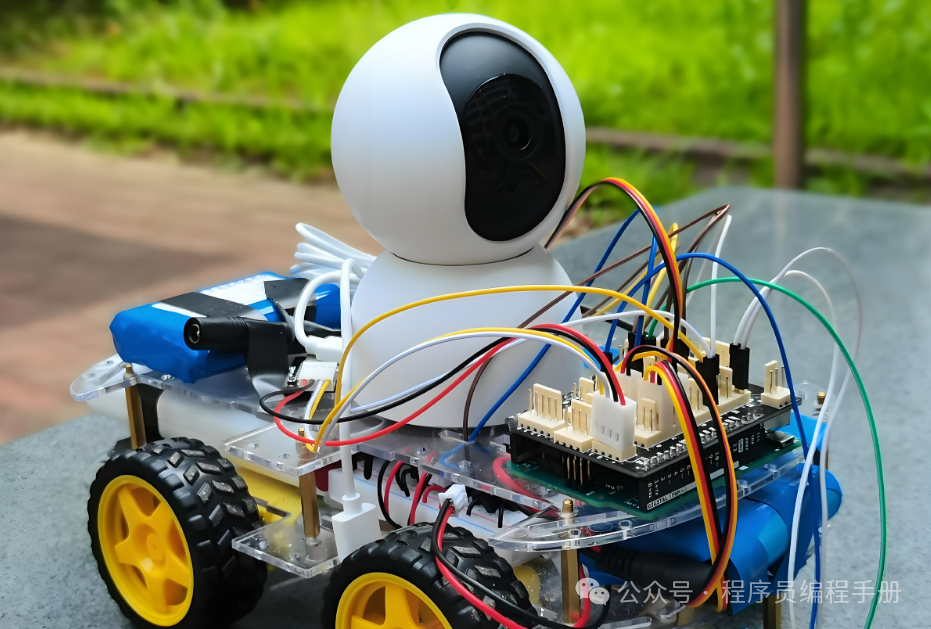From Zero to Project Master! A Comprehensive Guide to Learning Arduino (with Resources)
Introduction: Want to use Arduino to create cool smart home devices, robots, or interactive gadgets, but feel lost with a pile of hardware and code? Don’t worry! This article outlines a clear learning path for Arduino, guiding you from lighting your first LED to completing full projects, helping you progress from a beginner to a maker expert!

1. Beginner Village: Understanding Hardware and “Hello World”
🎯 Goal:Get Arduino to successfully “communicate” with your computer and complete your first small experiment.
1. Getting to Know Your Development Board
- Board Selection Guide:Uno is suitable for beginners, Nano is ideal for small projects, Mega has more interfaces but is more expensive, and ESP32 has built-in Wi-Fi functionality.
- Hardware Anatomy:Locate the digital pins (to control LEDs), analog pins (to read sensors), USB port (to upload code), and reset button.
2. Setting Up the Development Environment in 10 Minutes
- Download Arduino IDE (free from the official website) → Install drivers → Connect to the computer via USB.
- Essential Verification:Click the “Upload” button to make the onboard LED start blinking! Congratulations, your code is “running”!
3. Your First Project: Blink Variations
- Code Easter Egg:Modify the value in
<span>delay(1000)</span>to make the LED blink faster or slower, experiencing direct control of hardware through code! - Analogous Learning:Use a breadboard to connect an external LED and try to make two lights blink alternately.
2. Skill Upgrade: Mastering Sensors and Actuators
🔥 Core Principle:Input (sensors) → Processing (code) → Output (actuators).
1. Input Devices: Letting Arduino “Perceive” the World
- Button Interaction:Use
<span>digitalRead()</span>to read button states, press to turn on the light, release to turn it off. - Analog Signals:Use a potentiometer (knob) to control LED brightness, understanding
<span>analogRead()</span>and PWM dimming. - Environmental Sensing:Connect a temperature and humidity sensor (DHT11) and view real-time data in the serial monitor.
2. Output Devices: Letting Arduino “Take Action”
- Power Control:Use a servo to create an electronic pet that can nod its head, or use an L298N module to drive wheels.
- Visual Feedback:Display a “Welcome” message on an LCD screen, or make an OLED show a pulsating heart pattern.
3. Code Optimization: Saying Goodbye to “Delay” Stuttering
- Multi-tasking Secret:Use the
<span>millis()</span>function to implement “non-blocking delay”, controlling LEDs while reading sensors, doubling the smoothness!
arduino
unsigned long previousTime =0;
void loop(){
if(millis()- previousTime >1000){
digitalWrite(LED,!digitalRead(LED));// Toggle LED state every second
previousTime =millis();
}
// Other tasks can be executed simultaneously here!
}
3. Path to Mastery: Wireless Communication and IoT
🚀 Connecting Arduino to the Internet is True Intelligence!
1. Wireless Transmission Essentials
- Bluetooth Control:Use the HC-05 module to connect to a mobile app for remote light control.
- Wi-Fi Connectivity:ESP8266 uploads temperature and humidity data to a WeChat mini-program, allowing you to check your home environment anytime, anywhere.
- Cloud Interconnection:Use Alibaba Cloud IoT platform for cross-regional device control (e.g., controlling curtains at home from a distance).
2. IoT Mini Projects
- Smart Watering System:Soil moisture sensor + water pump + WeChat reminders, automatically watering plants when they are dry.
- Desktop Weather Station:OLED screen displays real-time weather, using ESP32 to fetch data from a network API.
4. Maker Practice: From Ideas to Creations
🌟 Project Inspiration Library (with implementation ideas):
- Smart Trash Can:Ultrasonic sensor detects hand presence, automatically opens the lid + voice announcement.
- Gesture-Controlled Desk Lamp:Gyroscope recognizes gestures to adjust brightness.
- Maze Balancing Ball:Use MPU6050 gyroscope to control a servo platform, challenging hand stability!
💡 Pitfall Guide:
- Burnt circuit? Check for short circuits, don’t forget to add a voltage regulator!
- Code errors? Open the serial monitor for debugging, checking logic line by line.
- Sensor data fluctuating? Add filtering algorithms to reject “mystical” values!
5. Learning Resource Package
📚 Must-See for Beginners:
- Tutorial Recommendations:Bilibili “Taiji Maker” Arduino series (free and very detailed).
- Books:”Practical Introduction to Arduino Programming” → Rich in case studies, suitable for learning while doing.
- Hardware Kits:Search “Arduino Starter 37-Piece Set” on Taobao, all sensors included!
👨💻 For Advanced Players:
- Search “Arduino Project Hub” on GitHub for reference to open-source project source code.
- Participate in the “DF Maker Community” competition to win development funds with your projects!
Conclusion:The joy of Arduino lies in “rapid trial and error, rapid iteration”. Even a blinking LED is the first step towards the intelligent world!Interactive Comments:What is the most interesting Arduino project you have done? Feel free to share your ideas or confusions, let’s unlock hardcore technology together!
Bring your ideas to life, starting today! 🚀